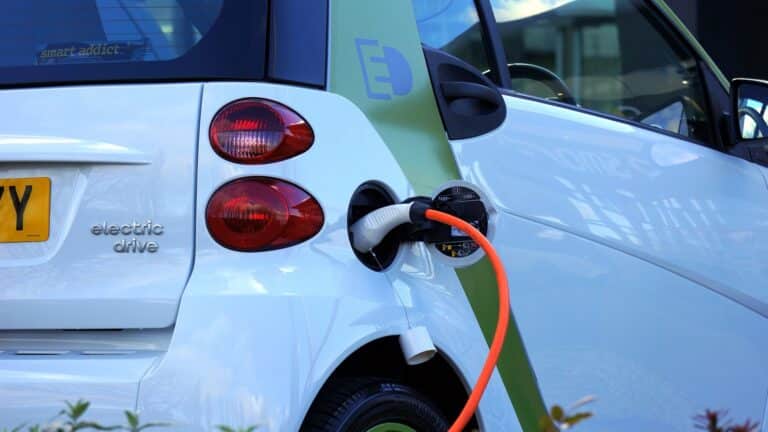This report represents the research and views of the author. It does not necessarily represent the views of the Center on Global Energy Policy. The piece may be subject to further revision. Contributions to SIPA for the benefit of CGEP are general use gifts, which gives the Center discretion in how it allocates these funds. More information is available at https://energypolicy.columbia.edu/about/partners. Rare cases of sponsored projects are clearly indicated.
For a full list of financial supporters of the Center on Global Energy Policy at Columbia University SIPA, please visit our website at https://www.energypolicy.columbia.edu/partners. See below a list of members that are currently in CGEP’s Visionary Annual Circle.
CGEP’s Visionary Annual Circle
This list is updated periodically.
Jay Bernstein
Breakthrough Energy LLC
Occidental Petroleum Corporation
Read the Report
Executive Summary
The case for rapid and profound decarbonization has never been more obvious or more urgent, and immediate action must match growing global ambition and need. An important new component of this discussion is the necessity of achieving net-zero global greenhouse gas emissions for any climate stabilization target. Until net-zero emissions are achieved, greenhouse gas will accumulate in the atmosphere and oceans, and concentrations will grow, even with deep and profound emissions reduction, mitigation, and adaptation measures. This places a severe constraint on human enterprise: any carbon removed from the earth must be returned to the earth.
To manage this aspect of the global carbon budget, carbon capture and storage (CCS) must play a central role. In particular, CCS will be important in two major roles:
- To manage emissions from existing, long-lived capital stock. This is especially true for rapid emissions reduction from three kinds of facilities: heavy industrial sector (i.e., cement, steel, and chemicals); production of near–zero-C hydrogen in abundance; and recently built power plants, in particular coal and gas facilities in Asia.
- To enable large-scale rapid carbon dioxide (CO2) removal through engineered systems. This will include approaches like direct-air capture with storage (DACS), bioenergy with CCS (BECCS), and carbon mineralization.
Due to the intense urgency of the climate crisis, global emissions must drop 50 percent by 2030 and reduce a further 50 percent from that level by 2040 to achieve net-zero by midcentury—this is the science-based target of the Intergovernmental Panel on Climate Change (IPCC) 1.5oC report and the “well below 2oC” scenario ratified in the Paris Accord. Thus, reducing global emissions rapidly and profoundly, plus gigatonne-scale CO2 removal, are the only ways to achieve these climate goals. The demands of 2030 place additional urgency on laying the foundations for growing deployment of CCS to achieve net-zero global emissions at lowest cost and greatest speed. A set of actions are essential:
- Infrastructure: CO2 transportation and storage networks today help illustrate the scale of what is required. Estimates suggest that the 8,000 kilometers (5,000 mi) of existing CO2 pipelines in North America must be expanded by an additional 35,000 kilometers (21,000 mi) to maximize emissions reduction. Similarly, industrial hubs and clusters, now under development in Europe, China, and the Middle East, can accelerate the deployment of CCS at reduced cost. More storage sites must be assessed and approved, and options like CO2 shipping must be explored for costs, opportunities, and technology requirements.
- Projects: Large capital projects like CCS projects and related infrastructure require 6–10 years from conception to commissioning. Currently, there are 19 large-scale industrial and two large-scale CCS power facilities operating, with combined capacity of about 40 million tonnes of CO2 per annum, and an additional 20 projects under development. The International Energy Agency (IEA), IPCC, and many other groups estimate CCS projects must mitigate 1.5 Gigatonnes per annum (Gtpa) by 2030 to stay on a 1.5oC increase climate trajectory—an increase by a factor of 35 from today. This places urgency on commencing construction and completing infrastructure to serve the volume of CCS projects needed, and it is likely that additional human capital is needed to serve this essential market.
- Market-Alignment Through Policy: Durable policies that align market dynamics and attract private capital will be essential— most importantly, policies that enable project finance. These can include tax credits, feed-in tariffs, rate recovery, construction or procurement mandates, grants, projects of common interest, carbon pricing, contracts for differences, regulatory emissions caps, or combinations of these policies. Some additional modest policy measures (e.g., modification of the London Protocol; innovation policy and Research, Development, and Deployment, or RD&D, support; clarification of long-term liability requirements) could play important roles in facilitating market adoption.
By focusing on 2030 targets as a stepping-stone to midcentury net-zero targets, governments can select what actions, investments, and policies can best serve domestic and global needs. Similarly, investments and policies made over the next decade will lay the foundation for continued decarbonization to achieve global net-zero emissions by midcentury.




